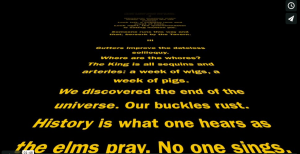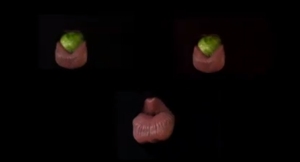The films Damaged Enamel and On Making an Entrance are 2 films that form a trilogy responding to the poems of Chris Emery. Damaged Enamel also draws on sculptural work I have made based on bathroom furniture (baths, sinks, hand basins, dryers) and so overlaps with other contextual discourses that underpin those works.
The thinking behind the exposition of both these films relates to the ones for reading poems I describe in my reflection about the treatment for the poem George’s Song. For all three I have used computer-generated voices rather than real ones. The visual elements of this film is far simpler than for George’s Song.
For On making an entrance was much more straightforward, I wanted to see whether I could use a titles effect to deliver the words of the poem. But I have played with the usual placing of this Star Wars type title. It is more of an end title sequence and I have turned that around to suggest beginning (Making an Entrance). This was because the poem had a filmic or cinematic quality to it and I wanted to reflect that in the filmed element of my work. The voice has a West Coast American accent and I thought that worked well with the cinematic elements too.
In terms of showing the work, I feel the Making an Entrance deserves a cinematic screen to give full effect to the 3D animation of the titles for words. Damaged Enamel is far more of an interior piece and could be shown on a small monitor or projected into a bathroom space or even onto an area of porcelain.



